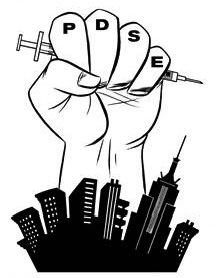Drug Overdose Mortality Rate Increased 66% Citywide in the Past Year with a 51% Increase in Overdose Deaths Among Latinos

New York, NY – On International Overdose Awareness Day, Harm Reduction Coalition and the Peer Network of New York call attention to the need for great overdose prevention efforts in communities of color. NYC Department of Health and Mental Hygiene (DOHMH) released their 2015 drug overdose mortality data earlier this month which show 2015 had both the highest overdose death rate and the largest number of lives lost to drug overdose since the 1990s. The Bronx was particularly impacted with an overdose death rate that is twice that of the other outer boroughs and the largest number overdose deaths citywide. Latinos were also over-represented with a 51% increase in deaths in the past year.
The increases in deaths in the Bronx and among Latinos points to the need for greater investment in overdose prevention and education in communities of color. The national and statewide conversation around overdose has largely focused on increased mortality rates in suburban and rural white communities. The 2015 NYC data highlights the need to continue overdose prevention work in urban communities and in communities of color.
“The lives of people who use drugs matter. Every overdose death is someone’s son, daughter, mother, father, sister, or brother. I live in the Bronx where we are seeing a crisis, particularly among Latinos like myself, I urge everyone to learn to use naloxone to reverse an overdose and save a life!” said Marilyn Scales Co-Chair of the Peer Network of New York and Bronx based Outreach Worker and Overdose Prevention Trainer
There are evidence-based solutions that would significantly reduce overdose death rates, many of which city and state policy makers have already begun pursuing. There are already laws in NY that allow for the distribution of naloxone, a medication that will reverse the effects of opioids, bringing someone who has overdosed back from the brink of death. NY City and State health departments have invested in peer-based trainings and outreach, which allow programs to reach people who use drugs on the streets and in the community. Peer-based outreach is the most effective way to reach people who are at risk of overdose by giving them the knowledge and tools to save a life. In order to address the overdose crisis, the city should invest more resources in peer programming, particularly in the Bronx.
“As a person that has lived in the Bronx for over thirty years and worked in the field of harm reduction for a decade, I have seen many lives lost because of unintentional overdose. For too long overdose prevention programs like NYHRE have been under-funded, particularly in the Bronx. Supplies of naloxone don’t save lives on their own, we need the funding so peers and outreach workers can go out and train people and distribute the medication. People lives are at stake, people are losing loved ones and I say give us the resources we need to do our job.” said Terrell Jones, Senior Co-Chair of the Peer Network of New York and Outreach & Advocacy Program Manager at the New York Harm Reduction Educators (NYHRE) a Bronx/Harlem based syringe exchange program.
Research has demonstrated that methadone and buprenorphine, the gold standard treatment for opioid dependence has a protective affect against fatal overdose by as much as 80%. Treatment with methadone or buprenorphine also reduces other harms associated with injecting drug use, such as HIV and the stabilizing effect of the medication assists people address other pressing issues such as lack of housing or employment.
“It is vital that we urgently increase access to buprenorphine and methadone. We need to be creative in making this option available and ensure that it is both affordable and feasible for opioid dependent people,” said Dr. Sharon Stancliff, Medical Director at the Harm Reduction Coalition.
Research has also demonstrated that modifying the environment in which drugs are used is highly effective in preventing overdose fatalities. One important public health strategy that has been successful in other jurisdictions, but not yet adopted in NYC, are Supervised Injection Facilities (SIFs). These facilities provide a managed environment, staffed by health professionals, in which people can consume drugs they might otherwise be using in public spaces. There has not been a single overdose death in any of these facilities over many years of operation and many thousands supervised injections. SIFs are also instrumental in connecting people to drug treatment, medical care, mental health care, and other services to improve health and wellbeing.
Advocates with the SIF NYC coalition have been calling on the city to allow SIFs to open. The New York City Council budgeted for a feasibility study on SIFs, which we view as an important step toward opening a SIF in the future.
“In the past decade we have lost over 7,000 lives to drug overdose in NYC and last year was the worst year yet. SIFs have proven effective in almost one hundred cities around the world—now is the time for our city to take swift action and try every option.” Said Mike Selick, Hepatitis C Program Coordinator at the Harm Reduction Coalition
